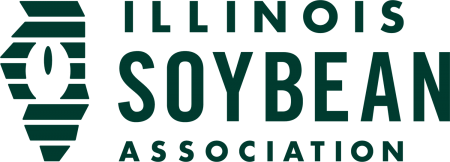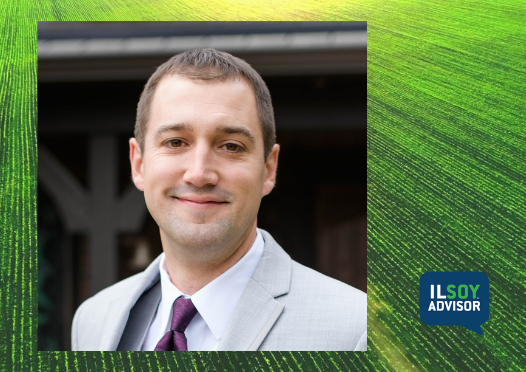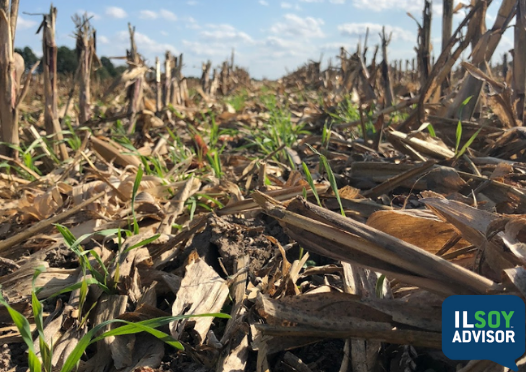ILSOYADVISOR POST
SHOWCASE FARMER: Tom Connors
The farmer. Tom Connors and his father grow corn and soybeans on their 2,500 acre family farm near Shipman, Illinois.
Environmental challenge. Connors’ farm is located in Macoupin County and the Coops Creek Watershed in southwestern Illinois. Nutrient loss reduction and water quality management are two of the main priorities for conservation efforts in the area. According to Connors, evaluating the soil’s fertility level prior to applying fertilizer is an important key to reducing nutrient runoff through surface and tile drainage.
Best management practices. “We started monitoring how much we applied around 1995,” says Connors. “It made economic sense to reduce the amount of nutrients we apply.”
Because using nutrients efficiently is a main concern for Connors, he has been collecting soil samples and recording yield information for more than 20 years. Using information about the organic matter content of his soil and coupling it with yield history, Connors says, “I can more accurately use variable rate fertilizer and variable rate lime.”
Connors uses other conservation practices such as dry dams, grass waterways and controlled shutoff boxes in the tiling in his land.
“Using grass waterways and waterway structures—that’s just good management.” Connors adds, “You don’t want to see the good dirt wash away.”
Tradeoff between short-term and long-term. In the tough economic times with lower commodity prices, Connors states that he will be a little choosier on the new management practices he tries and to what scale he implements the first year.
“I’m working on tweaking now. Making minor adjustments can save a lot of nutrients for the crops and not impact your bottom line drastically.”
Advice to growers. “Lean on local suppliers for ideas and practices,” says Connors. He adds that researching other practices on the Internet is a good idea—especially to look at what other people are doing.
“Every farm is different. You don’t have to implement it on the whole farm. Try something small first, and see if that works for you,” says Connors. “My dad let me start with the variable rate technology and soil sampling and didn’t hold me back. Most farmers don’t like change, but I encourage them to look out the window a little more than they have in past years.”
One thing for ’16. Connors says he isn’t rolling out anything big this year, but he is tweaking practices from previous years like planting cover crops to help reduce soil erosion.





Comments
Add new comment